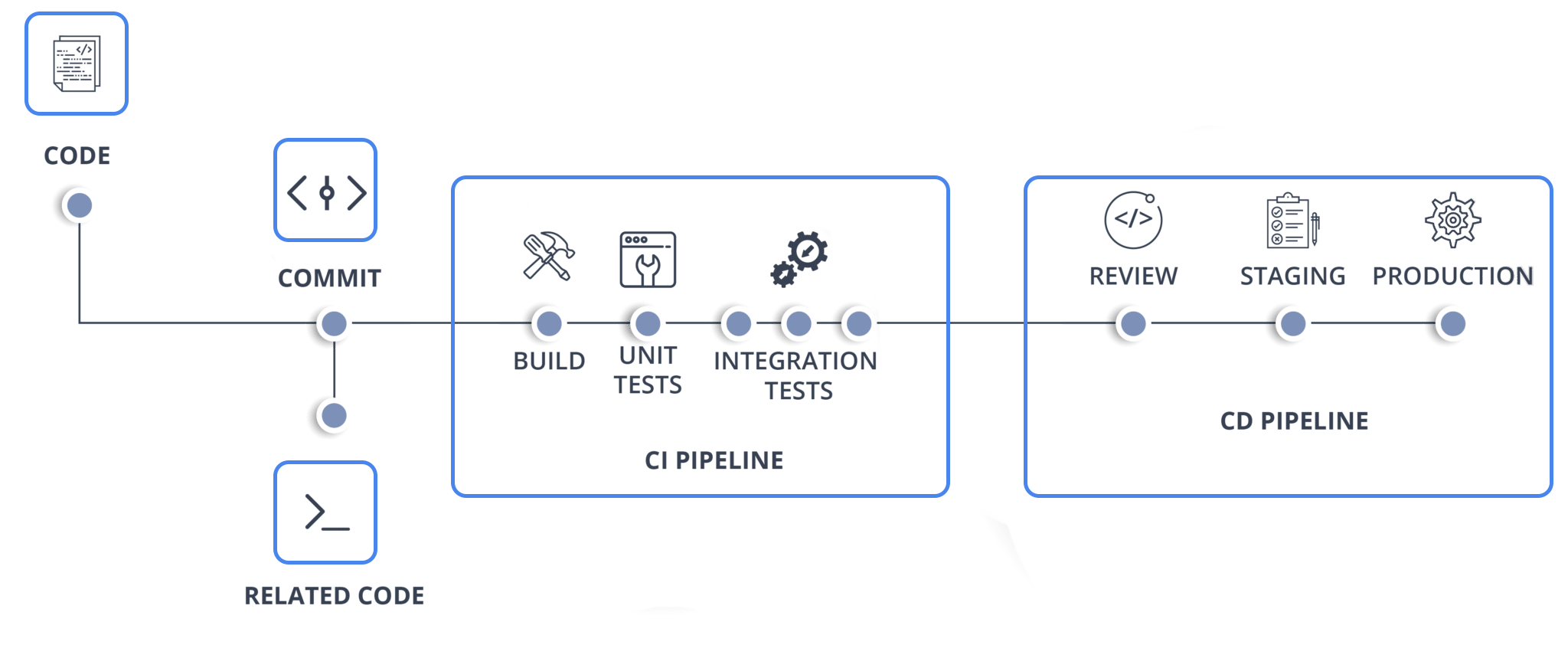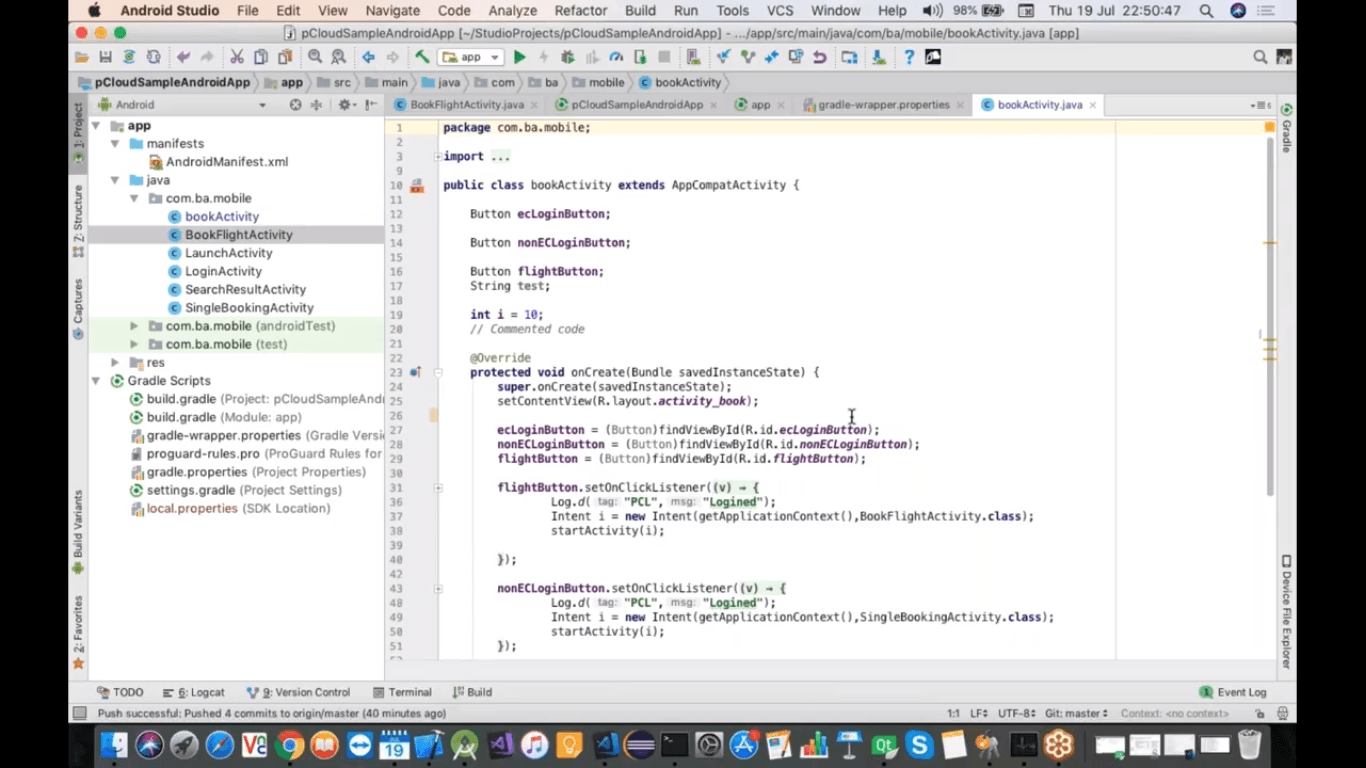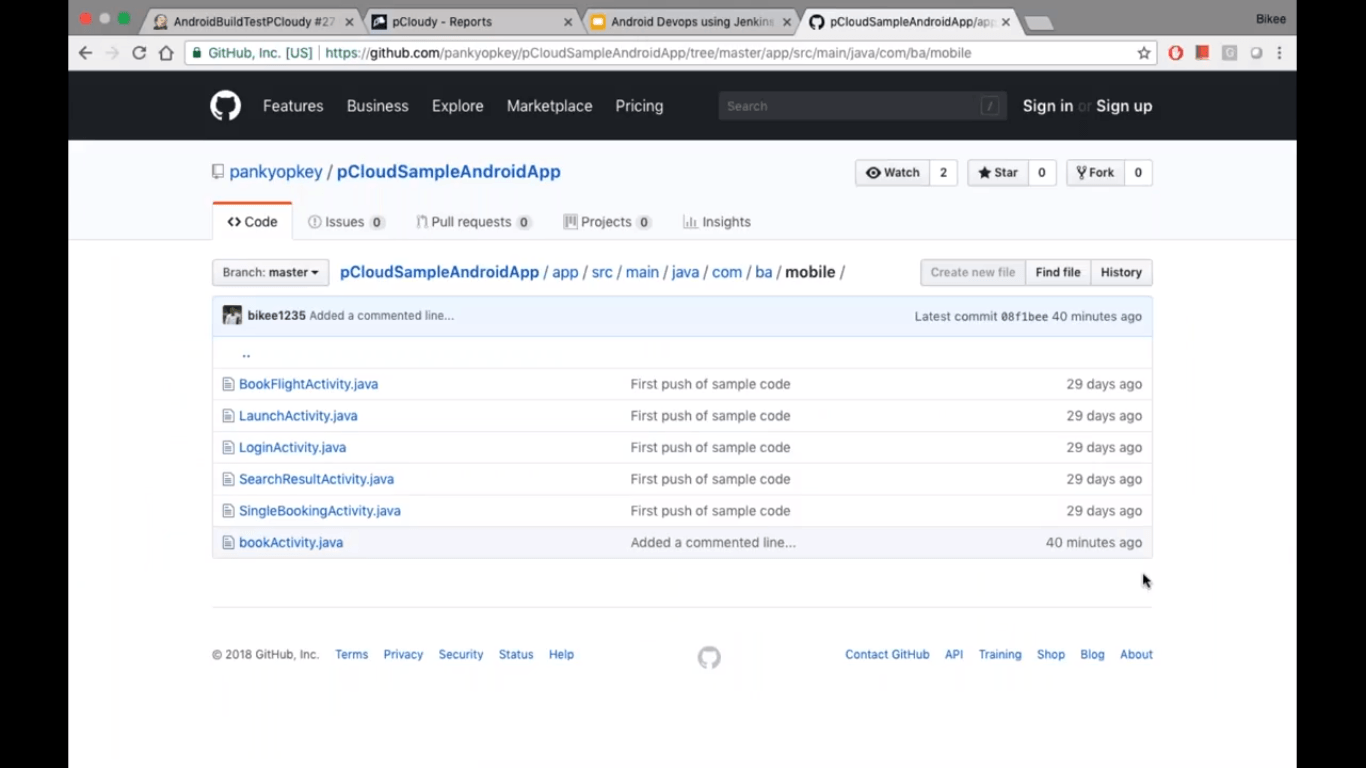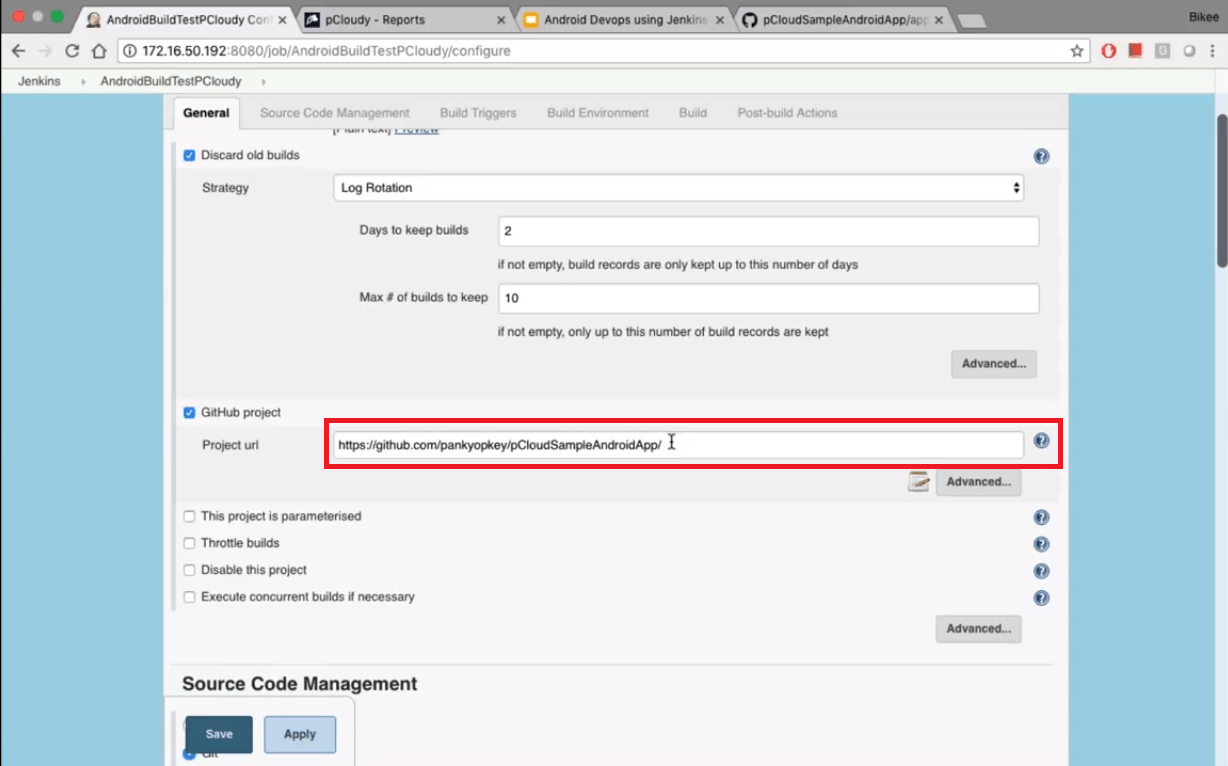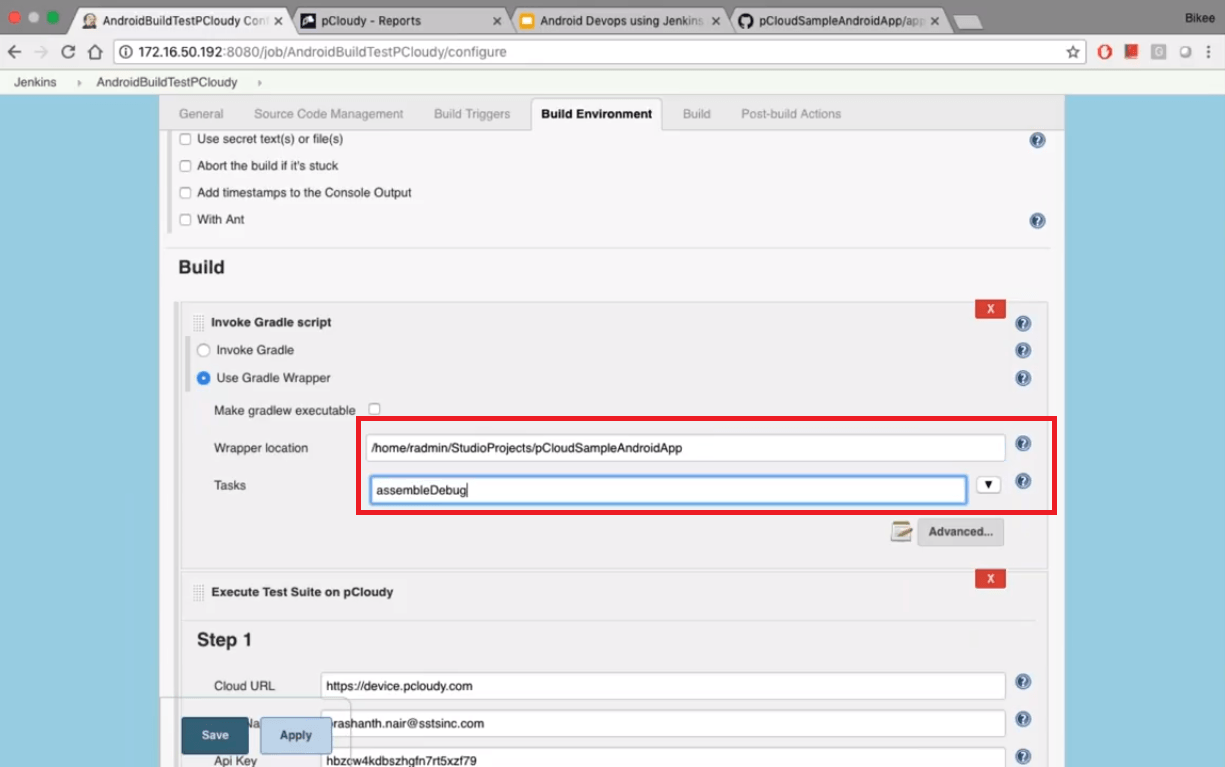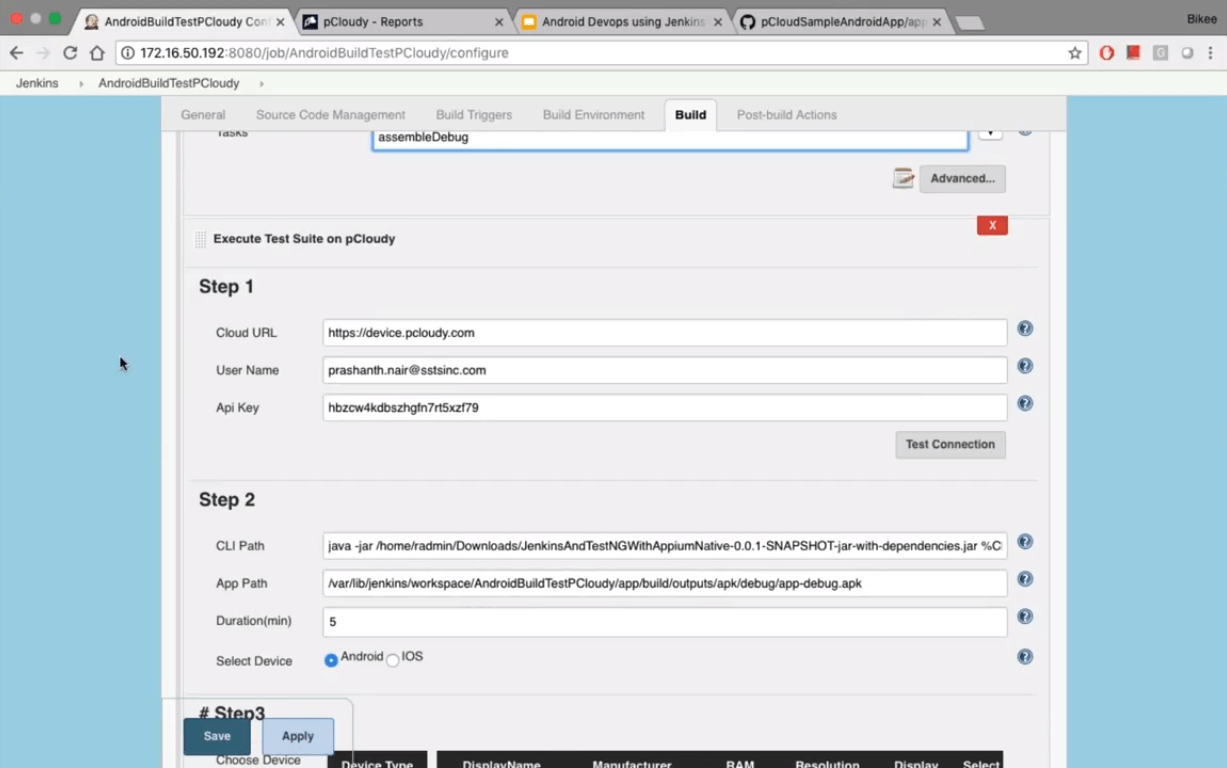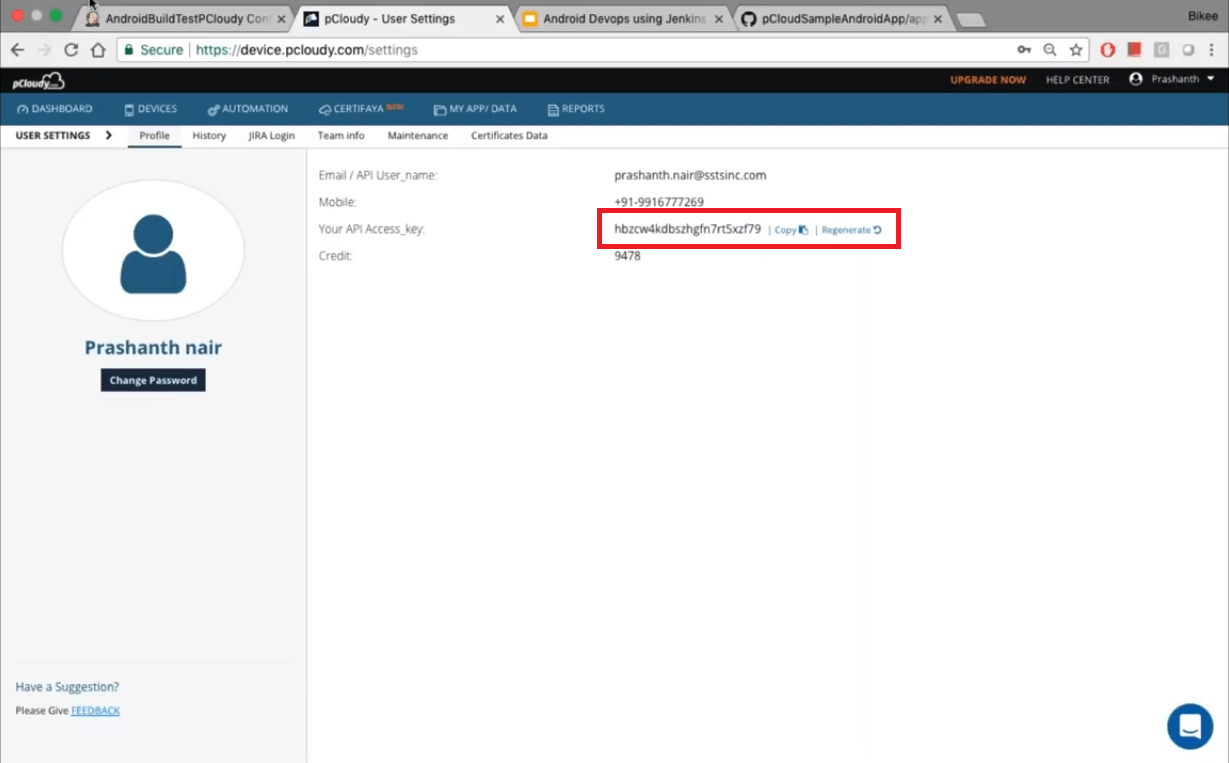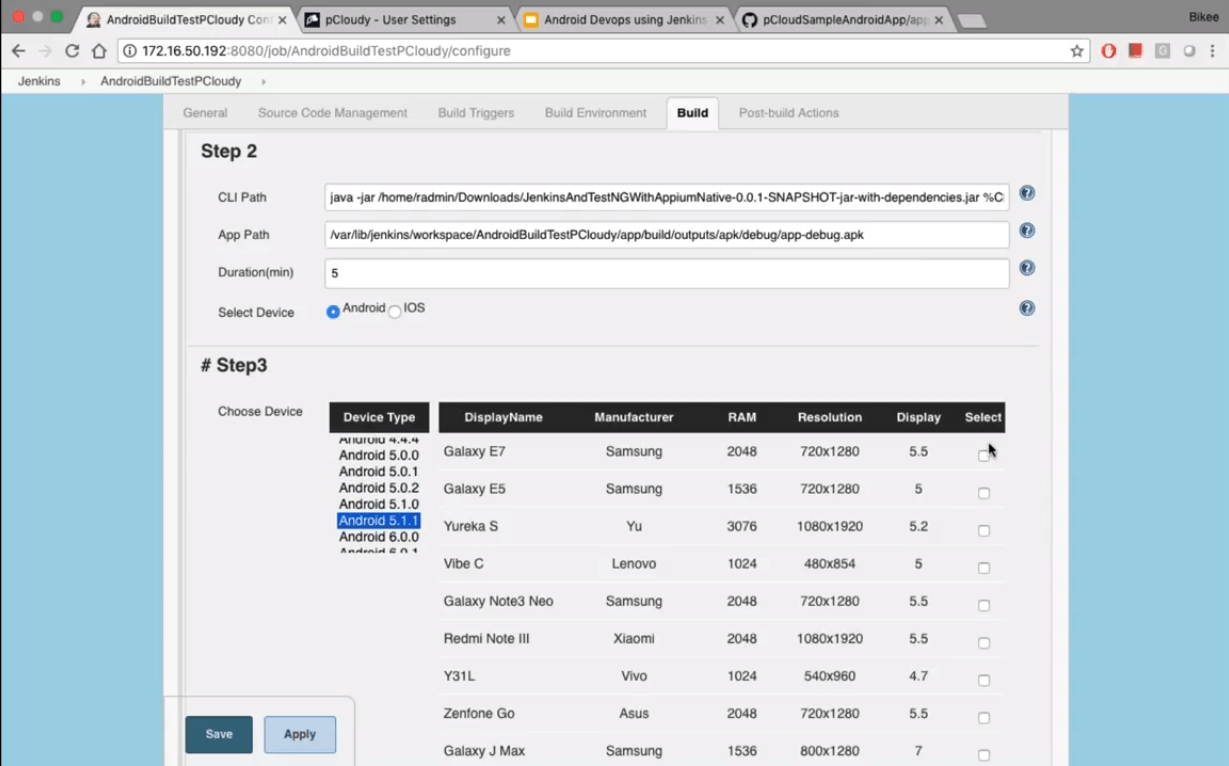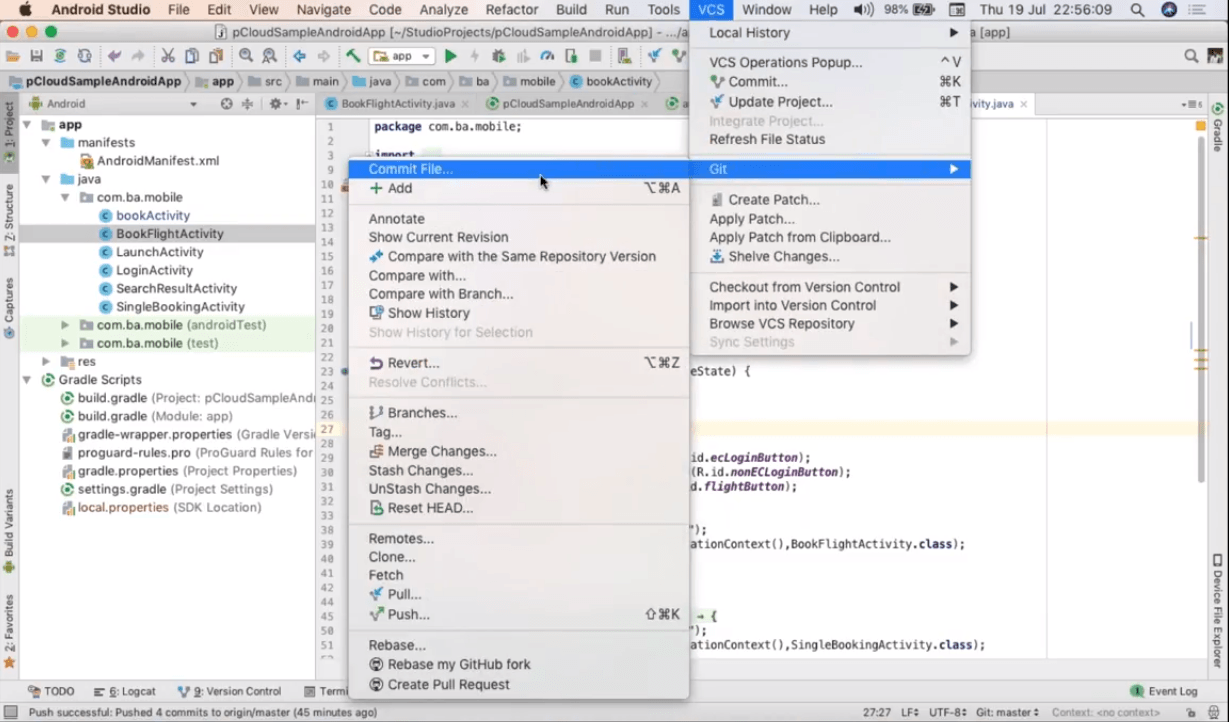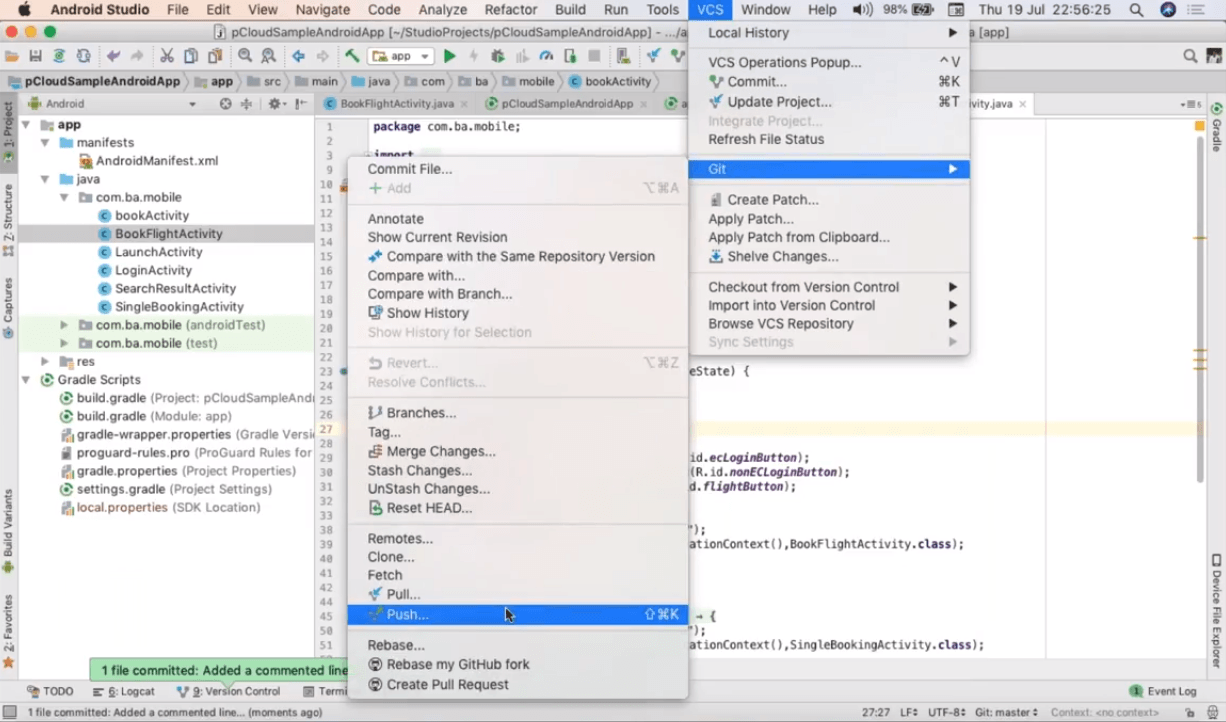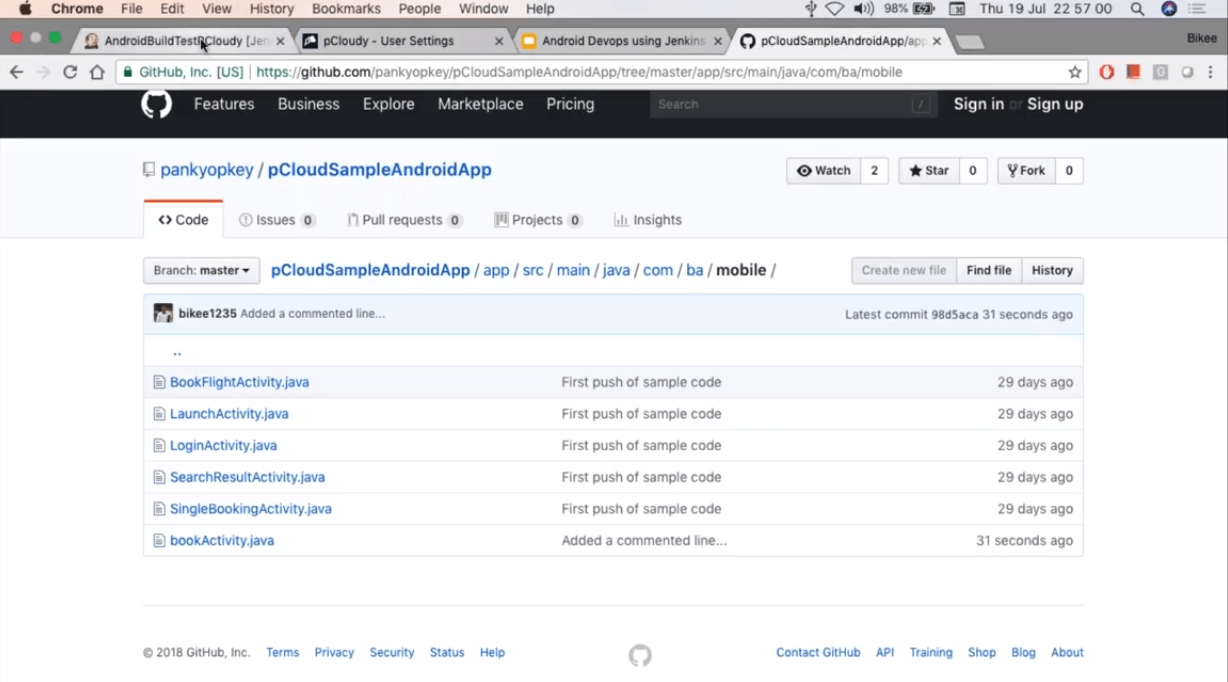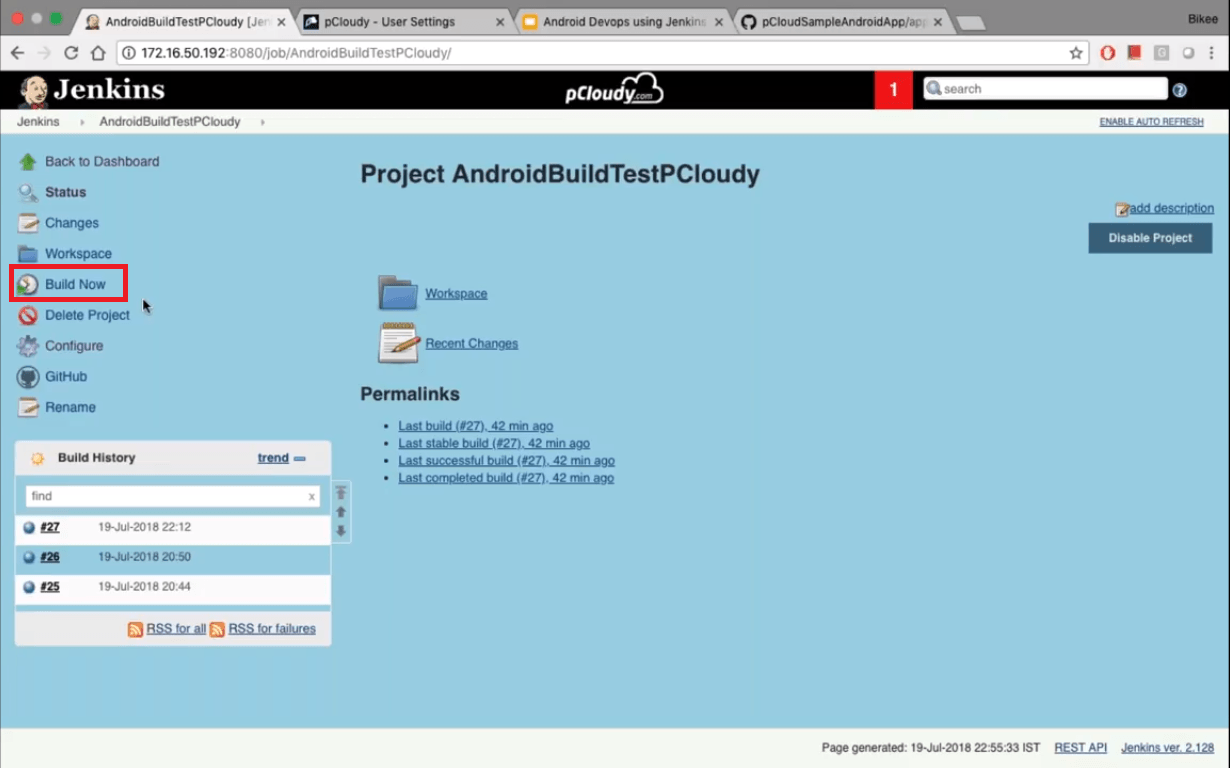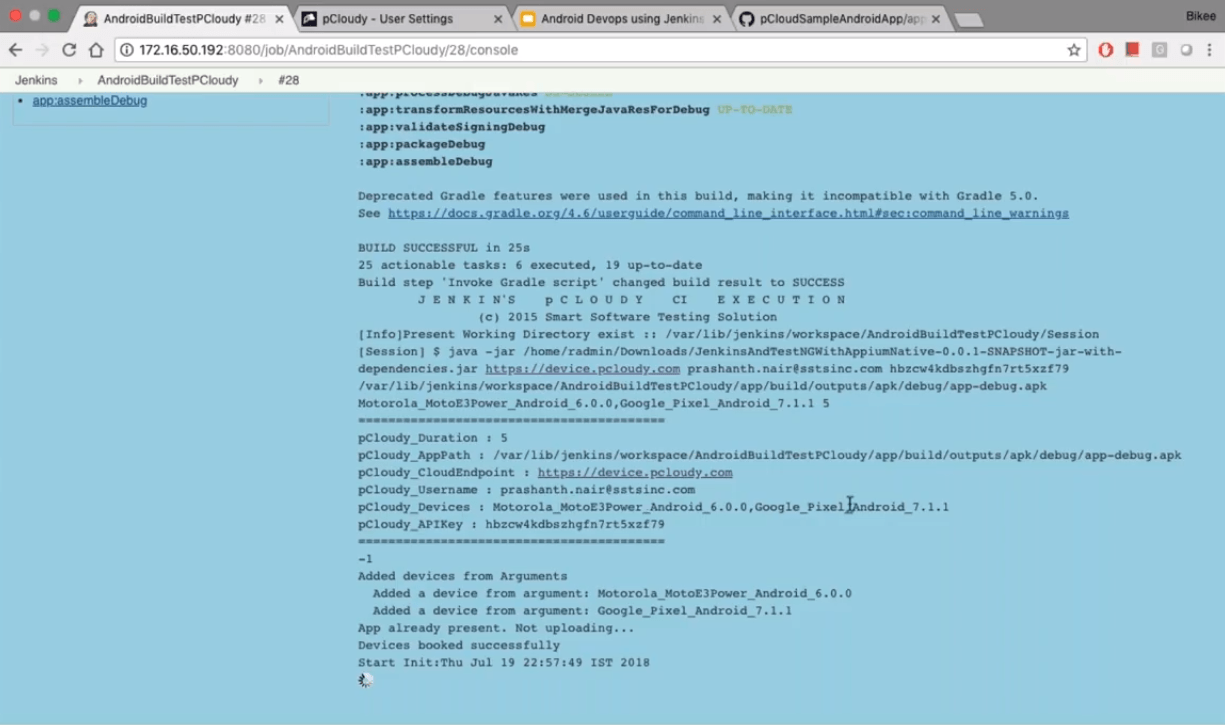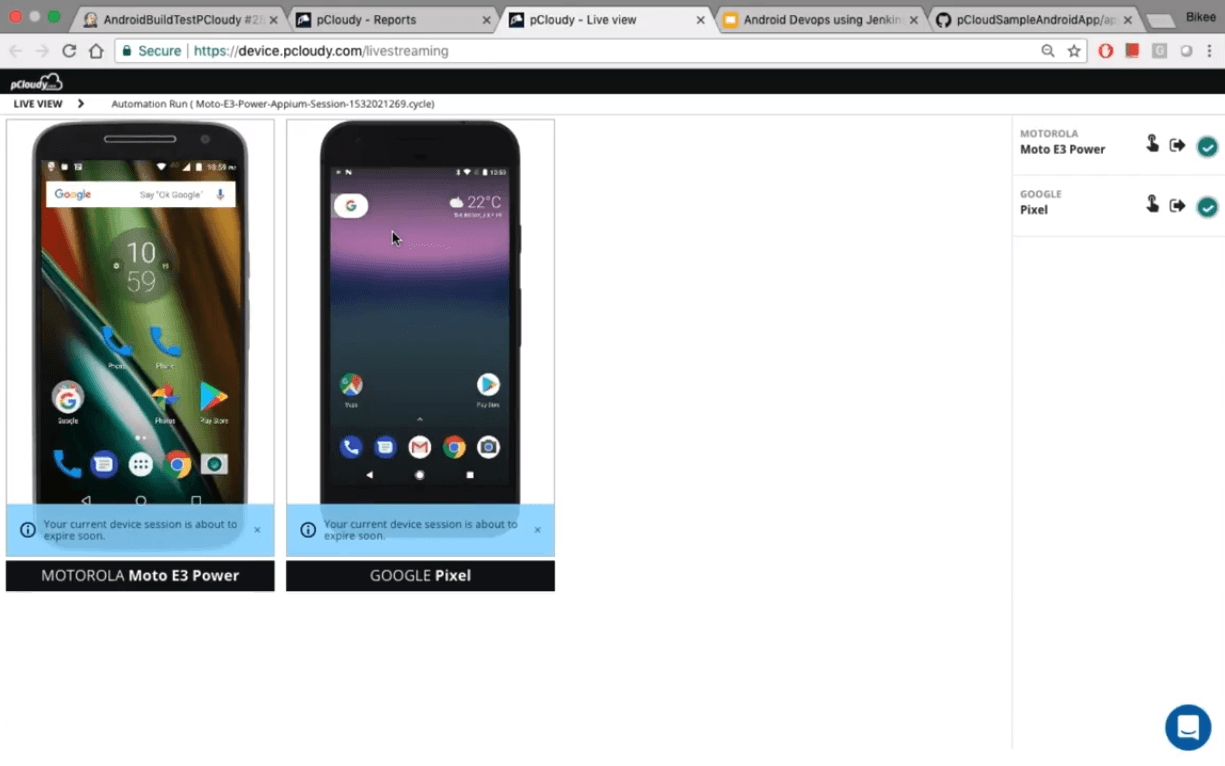Technology is growing exponentially and to be in the game, organisations have no choice but to be technologically enabled. Talking about ‘technology’ basically means creating solutions that are ‘faster, ‘convenient’ and ‘qualitative’. To keep up with the highly demanding technological dynamics, not only human resources need to be equipped with the contemporaneous developments of this industry but there is also a dire need of highly standardized processes in order to deliver the top-class results. That’s when the need of DevOps emerges. Right from the planning through delivery, the idea of introducing DevOps is to maintain the quality streak by a systematic collaboration of development and automation across the continuous delivery and continuous Integration. To make it simpler, there must be a convenient way to tackle the complicated scenarios without delays and for on time delivery. Hence, the introduction of Continuous integration tools makes it easier for the developers to streamline the development processes.
Continuous Integration methodology enables developers to provide immediate reporting whenever any defect is identified in the code so that immediate corrective action can be taken. It is an important part of DevOps that bis used to integrate various Devops stages. The testing process is also automated and the same is instantly reported to the user. There are innumerable Continuous Integration tools available in the market providing access to different unique features. These have open source as well as paid versions, depending upon the need of the user, the most preferred could be selected. Although all the continuous Integration tools are designed to perform the same basic functions but choosing the best suitable CI tool becomes important in the long run. Depending upon many factors like features, cost, ease of use, etc. more than one tools can also be chosen meeting varied needs and not just the single solution. Comparing the best continuous Integration tools that are available in the market, below is the list of 10 best and mostly used Continuous Integration tools which must not be ignored in 2023.
Continuous Integration Tools
1. Jenkins
Jenkins is a known and the most common Continuous Integration tool available today. Based on various comparisons, Jenkins tops the list. Jenkins is opensource continuous Integration server-based application that allows developers to build, automate and test any software project at a faster pace. It was originally a part of Hudson project started by Kohsuke Kawaguchi in the year 2004 but it was later on released by the name Jenkins in the year 2011. The tool has evolved over the years and has become the most reliable software delivery automation tool. The source code is in JAVA with few Groovy, Ruby and Antlr files. It has almost 1400 plugins to support the automation of the development tasks. Jenkins supports the entire software development life cycle right from building, testing, documenting and deploying. Jenkins comes with WAR file that allows easy installation of the tool which needs to be dropped into the JEE container and the setup can be run easily henceforth.
Key Features:
1. It is an open-source server for Continuous Integration tool
2. It is written in JAVA and comes with thousands of plugins that help in build, automation and deployment of any software project
3. It can be installed easily on any operating systems
4. User friendly interface that is easy to configure and with easy upgrades.
2. Buddy
Buddy is a web-based, self- hosted Continuous Integration (CI) and Continuous Delivery (CD) tool also known as Buddy.Works.Buddy is a serious advancement as one of the trusted CI CD tools. It has an extremely friendly user-interface and is also the simplest tool to use for the web developers, designers and quality assurance teams. Git developers can use this tool for building, testing and deploying the websites and applications using Github, Bitbucket, GitLab codes.
Key Features:
1. Steps for launching containers, automating deployment, and setting up
monitoring can be easily customised
2. Build, Ship and Deploy as inbuilt stack feature
3. Can be deployed to any hosting and cloud service providers
4. Supports Grunt. Gulp, MongoDB, and MySQL
5. Real-time reports on progress, logs and history can be monitored
6. Docker based builds and tests.
3.TeamCity
Teamcity, first released in 2006 is a continuous Integration tool developed by JetBrains. It runs in Java environment and is used to build and deploy different projects. It supports integration with many cloud technologies like Microsoft Azure, VMWare, Amazon.
Key Features:
1. It is a free of cost Continuous Integration tool
2. Supports platforms like Java, .Net and Ruby
3. Allows easy integration with IDEs like Eclipse, IntelliJ IDEA, Visual studio
4. Allows code coverage, inspection and performs duplicates check and creates history
reports of any changes made
5. It supports running multiple builds and tests under different platforms and
environments.
4. Bamboo CI
Bamboo is another Continuous Integration (CI) and Continuous Deployment (CD) software developed by Altassian. It is written in Java and supports other languages and technologies like CodeDeply, Ducker, Maven, Git, SVN, Mercurial, Ant, AWS, Amazon, etc. The tool performs automatic build, testing and deployments. Automation thus saves time and allows developers some extra time to focus on the strategic aspects of the product.
Key Features:
1. Bamboo can build, test and deploy multiple projects simultaneously and in case of any build failure, it provides the analysis and the failure reports
2. Current status of the builds and server status can be monitored with the help of the REST API provided by Bamboo
3. Bamboo supports testing tools like PHPUnit, JUnit, Selenium
4.It is compatible with JIRA and BitBucket
5. Bamboo is related to other products like JIRA, Confluence and Clover by Altassian allowing the developers and the other team members to be at the same page
6. It can also import data from Jenkins.
5.GitLab CI
GitLab Continuous Integration tool is a complete code management platform with multiple mini tools each performing a different set of function for the complete SDLC. It is owned by GitLab Inc and was created by engineers Dmitriy Zaporozhets and Valery Sizov . It provides important analysis on the code views, bug management,CI CD in a single web-based repository which also makes it the most demanded CI CD tool. GitLab CI is written in Ruby and Go and its core functionality is released under an open-source MIT license, keeping rest of the functions under proprietary license.
Key Features:
1. It is directly integrated with the GitLab Workflow
2. Allows all critical information on the code progress in a single dashboard
3. Free for the community edition, the enterprise version is paid one
4. Language Programming CMD build scripts available allowing to program them in
any language
5. APIs are provided to allow better product integrations
6.Circle CI
Circle CI is one of the best Continuous Integration and Delivery tool available in the market. CircleCI provides a great platform for build and test automation along with comprehensive deployment process. It can be integrated with GitHub, GitHub Enterprise and Bitbucket to create builds. It also supports on-cloud Continuous Integration. Because of its strong features and efficient performance in this space, it is highly recommended by experts.
Key Features:
1. It easily Integrates with Bitbucket, GitHub, and GitHub Enterprise
2. It allows branch focused deployment
3. It performs easy bug-cleanup, runs tests quickly and is highly customizable
4. Easily integrates with AWS, Google cloud and other services
5. Build tools like Maven, Gradle can be easily integrated
7.Codeship
Codeship Continuous Integration tool was acquired by Cloudbees. It is praised by its users for its combination of features for build and deployment. It is efficient, simple and deploys directly from the Github and Bitbucket. Its features of integration and delivery are combined in such a way that it makes more reliable deployment as soon as the code is automatically tested.
Key Features:
1. It allows a very supportive environment when it comes to compatibility with different technologies, languages, deployment in different environments of choice.
2. It has a very fast and strong developer support and is very easy to use.
3. It also supports third party tools integration very well.
4.It requires a single sign-up for Github, Bitbucket and Gitlab
5. Allows simple file management configuration, easy monitoring and scale-up as per the need.
8. Cruise Control
CruiseControl is a Java based Continuous Integration platform. It is popular for allowing various source controls, email notifications and build technologies with the help of plugins. It is written in Java and has versions of .Net (CCNet) and Ruby (CruiseControl.rb.) as well.
Key Features:
1. Supplies builders for Ant, Nant, Maven, Phing, Rake, and Xcode.
2. It is an Open source Framework
3. Allows Custom build loops for build cycles
4.Its web interface provides visual status of the builds
5. Provides JSP Reporting for managing build results
9. BuildBot
Buildbot is a software development continuous integration platform that allows automatic compilation and testing in order to validate any changes occurred in the project. It is written in Python. Originally created by Brian Warner, it is now maintained by the developer Dustin Michelle. It is popular for performing complex automation testing of the Development Life Cycle processes and for application deployment. This is among one of those tools that allow distribution and execution of programs parallelly on different platforms.
Key Features:
1. It is an Open source Continuous Integration Platform
2. Automates complex building, application deployment and manages complicated software releases
3. Allows time estimation of build completion as it provides real-time insights of the build progress.
4. Uses Python, C and host requirements of Python and Twisted
5. Supports distributed, parallel execution across multiple platforms and provides extensive status reporting
10. GoCD
GoCD Continuous Integration server is owned by Thoughtworks. It streamlines the build, automation and deployments of complex build cycles. Its top USP is to enable plugins or design custom plugins for any requirements during the CI CD process. It follows business continuity concept under which it sets up multiple servers is possible in order to keep the data readily available at the time of emergency. It is compatible with Windows, OSX, AWS AMIs, Docker, Debian/APT, RPM/YUM, and Zip. It can run tests in multiple languages and provides robust reports on the insights.
Key Features:
1. It is an opensource Continuous Integration server.
2.It allows the deployment of any preferable versions of applications
3.It easily configures the dependencies based on the last report and allows on
demand deployments
4. There are numerous plugins available for this and can also be customized as per the
requirement.
5. It re-uses the pipeline configuration keeping the configuration organized with the
help of its template system
6. The entire workflow can be tackled and watched with good tracking and feedback
system allowing the developer to track changes from committing through
deployment at a single place.
Conclusion
The above list of best Continuous Integration tools describes each of the ten tools in detail and covers the best of all along with their main features. This information is insightful for those who still haven’t thought of inculcating these automation tools to build and deploy various aspects of the Software development projects. Continuous Integration, delivery and deployment are very critical and complex systems in the Software theory. They need to be handled with care in order to fetch great results. Choosing the right tool for your business would certainly help handle this responsibility well. It is not about choosing one best tool, but multiple tools can also be selected based on the requirements of the project. As the CI CD continues to grow and evolve, it leaves the innovators with more chances to explore on creating the best versions of such tools.





